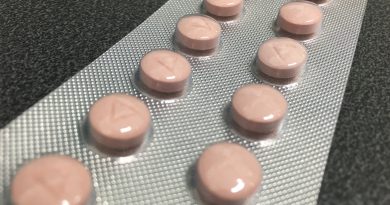What are the risk factors and treatments for stroke?
A stroke or ‘brain attack’ is a major medical emergency. They occur when the blood supply to part of the brain is cut off. Prompt treatment is crucial to minimise damage to the brain; some treatments have been shown to have no beneficial effect if carried out too long after the stroke. Stroke is the 3rd biggest cause of death in the UK after heart disease and cancer and is the largest cause of adult disability in the UK. 150,000 people have a stroke in England each year. Despite the seriousness of this condition research is underfunded with £22 spent per stroke patient compared to £295 spent per cancer patient.
The main symptoms for stroke can be remembered by the acronym FAST: Face; Arms; Speech; and Time.
- Facial Weakness – droopy/lopsided smile
- Arm Weakness – Person may not be able to lift one/both of their arms
- Speech Problems – Speech may be slurred and tangled
- Time – It is time to call 999 if any of the above are present
There are two types of stroke:
- Ischaemic (85% of strokes) – Blood supply is lost to part of the brain due to a blood clot, air bubble or fat globule.
- Haemorrhagic (15% of strokes) – Brain damage is caused by a blood vessel rupturing.
Mini-strokes or Transient Ischaemic Attacks (TIAs) can be precursors to ischaemic attacks with a temporary blockage causing stroke symptoms. This suggests the patient has atherosclerosis or is at high risk of an ischaemic attack.
There are many risk factors for stroke whcih are linked to the risk factors for cardiovascular diseases such as heart attack. 75% of strokes occur in people over 65, however men are more likely to get stroke at a younger age. A history or family history of heart disease, diabetes, high blood pressure or high cholesterol, increases the risk of stroke. Also ethnic background can play a part with Asian, African and Caribbean, having a higher risk factor for stroke. Life style choices can also be risk factors with poor diet, lack of exercise and being overweight increasing the chance of a blood clot forming. Smoking and excessive alcohol consumption can also increase the chance of stroke.
Stroke patients undergo an urgent brain scan (CT or MRI) on admission to hospital. This allows doctors to identify the stroke, find the affected area and assess the damage done. Most strokes can be treated with clot busting drugs such as alteplase (clot busting drugs are only effective in a 4.5 hour period after stroke). This breaks down the clot and restores blood flow to the brain. Some strokes are treated with surgery. This can be surgery to:
- Remove fatty deposits in an artery, e.g. Carotid endarterectomy
- Pull out a blood clot
- Repair damage from a haemorrhagic stroke – remove blood from the brain and repair ruptured blood vessels. This is known as a craniotomy.
Preventative drugs can be used to reduce the risk of stroke:
- Anti-platelet drugs such as aspirin can make the blood less sticky reducing the chance of clotting
- Anticoagulants such as Warfarin or Heparin can be used to thin the blood to help prevent clots from forming.
- Medicines can also be used to reduce blood pressure.
- Drugs such as statins can be used to reduce cholesterol levels.
Most patients who have strokes go into rehab to help them try to regain any lost brain function. The damage can be severe with impaired bodily functions, trouble communicating, and damaged thought processes and learning abilities. 1/3 of people make a significant recovery within 1 month. However severe strokes can kill or cause long-term disability due to neurological damage.




